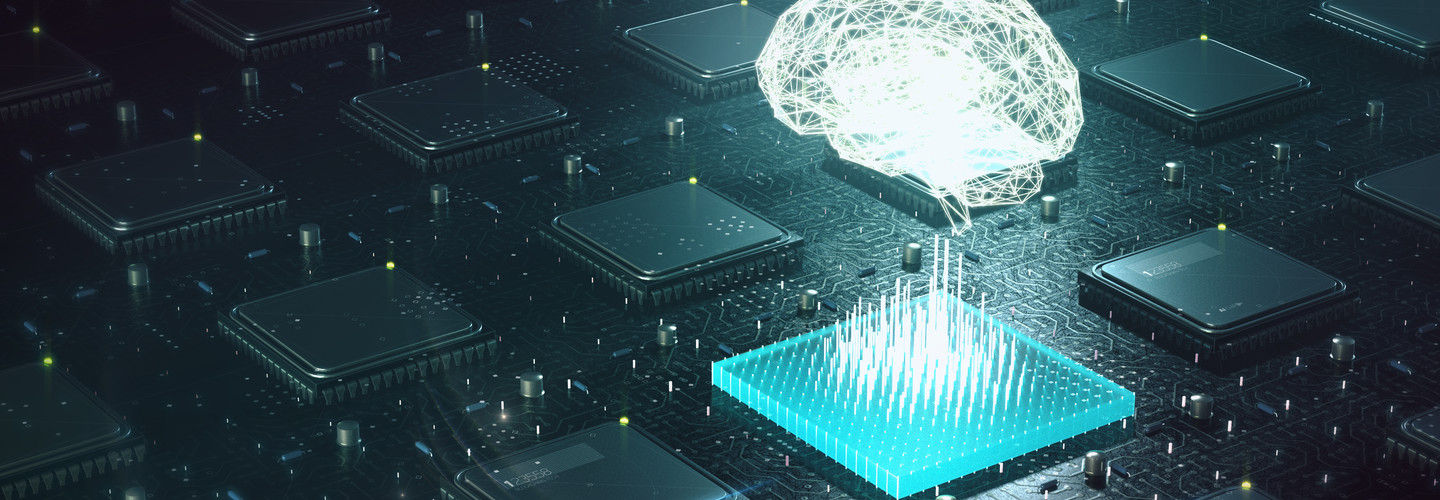Deep Neural Networks: Understanding the Tech Behind AI
What company isn’t interested in artificial intelligence these days? Accenture's research predicts that AI use could double annual economic growth rates in more than a dozen developed economies by 2035. But as AI adoption grows, it will change the way businesses operate, forging a new relationship between humans and machines that’s expected to increase labor productivity by up to 40 percent, Accenture says.
Changing business dynamics through AI will depend largely upon the use of deep neural networks, an outgrowth of artificial neural networks. Harvard Business Review has estimated that 40 percent of the potential value created by analytics today comes from deep learning underpinned by DNNs.
What are Artificial Neural Networks?
Artificial neural networks (ANNs) have existed in computational neurobiology since the late 1950s, when psychologist Frank Rosenblatt created what’s known as perceptrons. Perceptrons are made of McCulloch-Pitts neurons that, when stacked atop one another, become artificial neural networks capable of performing linear tasks.
ANNs process information similarly to the human brain, where cause and effect relationships can be stored to inform future decision-making. In an ANN’s case, one layer of “neurons” receives input data, which is then processed by a hidden layer so that it can be transformed into insights for the output layer. The process, called supervised learning, uses single question-answer pairs to teach ANNs which inputs trigger certain outputs so that, eventually, they will be able to independently scan inputs and identify corresponding outputs.
Results can inform predictions and recommendations, such as who might be a bad credit risk for a bank loan or which products to promote to online shoppers.
What are Deep Neural Networks?
Think of deep neural networks (DNNs) as more complex ANNs. The term “deep” refers to an increased number of hidden layers — up to 150 compared with two or three in ANNs — processing information. These additional layers also process more complex data sets, allowing DNNs to understand nonlinear relationships, such as driverless cars that know to stop at red lights and stop signs.
DNNs require substantial computing power to learn, and leverage supercomputers alongside clusters or cloud computing to learn in hours or less. Applications for this extreme learning include facial detection and recognition for security purposes, speech translation, anomaly detection to prevent credit card fraud, and time series forecasting for supply chain management or inventory planning.
Artificial Neural Networks vs. Deep Neural Networks: What’s the Difference?
DNNs are developed from the same learning processes as ANNs, but go one step further with additional information processing layers — hence why they’re considered “deep” learning. When these layers are added, the traditional ANN can then understand more complex, nonlinear tasks.
Key differences between ANNs and DNNs include:
- Layer number: ANNs have up to three hidden layers to process information, while DNNs contain up to 150.
- Learning capabilities: DNNs are better equipped to perform nonlinear tasks, such as understanding that both a cat and a dog are animals, but that cats are not dogs. DNNs also understand why a certain outcome was provoked.
- Supervisory requirements: Select DNNs don’t have to be trained for every scenario, and instead can apply past training to new instances.
How Can Businesses Use Deep Neural Networks?
“Deep learning algorithms are being used widely today for different tasks — image recognition, categorization, classification,” says Dave Schubmehl, research director of cognitive/AI systems at International Data Corp.
Convolutional neural networks (CNNs) apply to speech to text, text to speech and language translation. They are and increasingly will be applied to videoconferencing. CNNs can be used to train image classifiers, such as a camera in a conference room that can recognize that people are walking into the room, identify those individuals and count up the total number of attendees.
Recurrent neural networks (RNNs) make connections between neurons in a directed cycle. That means output depends not only on the present inputs, but also on the previous step’s neuron state. For businesses interested in handwriting or speech recognition tools, RNNs can help develop algorithms for chatbots and digital personal assistants.
A fundamental part of most Google, Microsoft and Apple products is long short-term memory (LSTM) DNNs. Such DNNs have better information control than RNNs, and don’t eliminate or modify stored information when processing it through multiple sequences. For businesses using collaboration tools or mobile devices, LSTM allows mistyped words to be autocorrected more consistently.
Additional use cases for various types of DNNs include:
- Transportation: Deep learning automatically detects objects, including pedestrians, and helps trigger driverless cars to respond in the correct manner.
- Defense: Deep learning identifies objects from satellites, including information regarding safe or unsafe zones for troops.
- Medicine: Deep learning automatically detects cancer cells. Teams at UCLA built an advanced microscope that yields a high-dimensional data set used to train a deep learning application to accurately identify cancer cells.
- Manufacturing: Deep learning helps detect when people or objects are within an unsafe distance of machines in factory settings.
- Electronics: Deep learning helps home assistance devices like Google Home interpret your voice to learn your preferences and trigger correct responses to questions like, “Alexa, what time is it?”
How to Incorporate a Deep Neural Network into Your Business
To find out whether AI fits with a business’s needs, experts advise creating a small team of data scientists, engineers and software developers to work on a specific problem. Give it six to nine months to prove out before determining the level of investment you want to make in the technology and whether you would benefit by using third-party services to build your machine learning models.
It’s not necessary to do all the heavy lifting alone. Cloud platforms such as Microsoft Azure and Google Cloud can help. Users can take advantage of these programs’ pretrained AI models (for computer vision, recommendations and so on) to help build, train and run machine learning models.
In specific use cases, some companies may be able to harvest their own data for training models unique to their businesses. For instance, manufacturers can leverage data from machines on their assembly lines to train models to detect anomalous behavior and automatically tune those machines as needed. It’s more likely the case that companies would rely on a third-party platform for improving business intelligence efficiency and common back-office productivity tasks.
The Limits of Deep Neural Networks
DNNs create something of a black box: Data is input and a pattern map pops up, but why the decision was made remains a mystery.
More research needs to be done to understand how these systems work. That understanding is important to a number of use cases. Automakers simulating driverless car scenarios, for example, would want to follow the path of a classification algorithm to find the image recognition gaffe that leads to a person being classified as a tree. Hitting a tree is bad; hitting a person is a thousand times worse.
Such a problem may have its roots in using a model that wasn’t trained with the right data or in which the data was not annotated correctly. In many cases, biased data also affects output accuracy, an AI flaw that computer scientists continue to work to correct.









